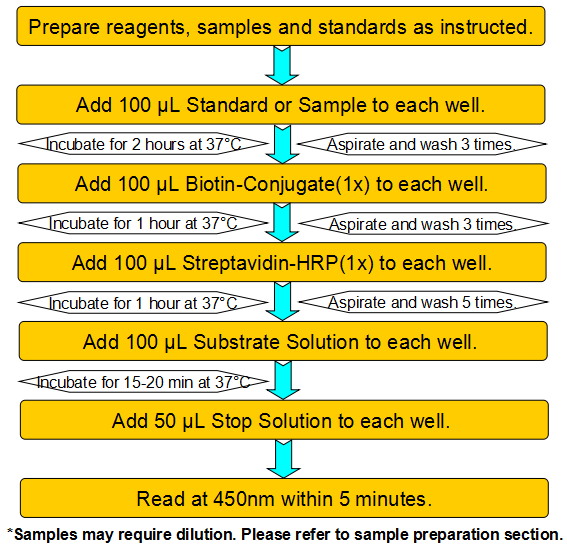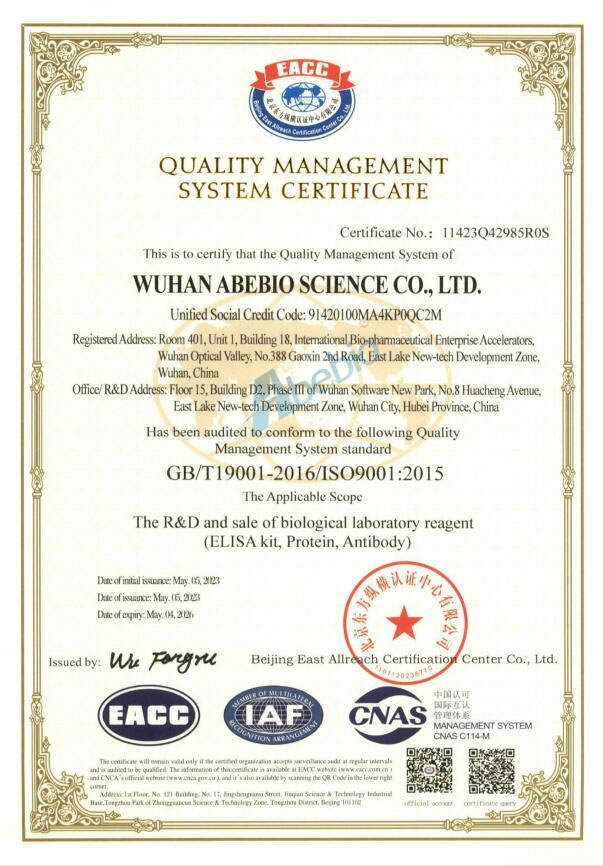Current Position:Home>>ELISA Kit>> Human Measles virus IgG antibody (MV-Ab-IgG) ELISA Kit
Cat.No.: AE62481HU
Welcome to order from local distributors.
Add to cart Bulk requestFor research use only. Order now, ship in 3-5 days




| Species Reactivity | Human (Homo sapiens) |
| UniProt | N/A |
| Abbreviation | MV-Ab-IgG |
| Alternative Names | N/A |
| Range | Request Information |
| Sensitivity | Request Information |
| Sample Type | Serum, Plasma, Other biological fluids |
| Detection Method | Indirect ELISA |
| Analysis Method | Qualitative |
| Assay Duration | 1-3h |
| Sample Volume | 1-200 μL |
| Detection Wavelengt | 450 nm |
|
Reagents |
Quantity |
Reagents |
Quantity |
|
Assay plate (96 Wells) |
1 |
Instruction manual |
1 |
|
Positive Control |
1 x 0.5 mL |
Negative Control |
1 x 0.5 mL |
|
HRP-Conjugate |
1 x 12 mL |
Sample Diluent |
2 x 50 mL |
|
Wash Buffer (concentrate 20 x) |
1 x 20 mL | Stop Solution | 1 x 6 mL |
| Substrate A | 1 x 6 mL |
Substrate B |
1 x 6 mL |
| Adhesive Films | 4 |